
Building bigger pecs is probably priority for most guys looking to improve their physique in the gym, however, most of them make a some of common mistakes which we will first analyse after which I will offer you a solution on how to fix them to make great progress.
In this article you are going to learn:
The structure and bio-mechanics of pectoralis muscle
Three biggest mistakes people make with chest exercises
The three most important principles that will help you grow your chest
Best chest exercises you can do
Optimal volume and intensity to fully develop chest
So lets start off by muscle anatomy and its function!
Chest Anatomy And Bio-mechanics
Pecs or pectoralis major is divided into 2 heads. The sternal head, and the clavicular head as illustrated below.

Bio-mechanically, pecs have 5 different functions: shoulder adduction, transverse adduction, internal arm rotation, shoulder flexion and shoulder extension.
All of these are listed below with a video to help you fully understand the movement. I believe this is essential to understanding how muscle actually works and is a foundation for you to better understand exercise selection.
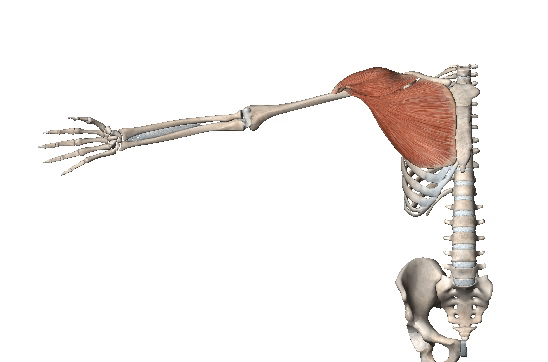
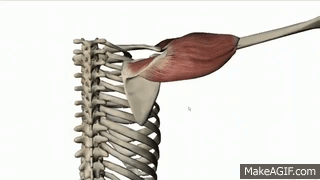
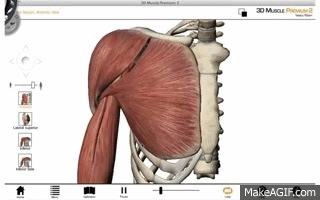
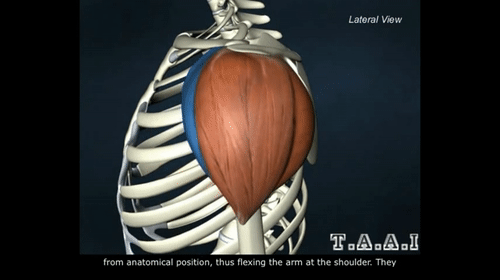
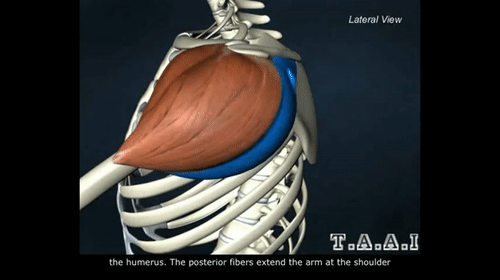
If you carefully look at the movements above, you will realize that they mimic most common chest exercises like flat bench press, incline bench press, decline bench press, flies (with different angles) and pull-over.
Now, most guys think they are struggling with the upper chest (clavicular head) development, despite doing a lot of incline bench variations, but in most cases they just need more overall chest development.
I will also use myself as an example below.
This is me when I was benching 70 kg for reps doing bro splits. I would have 1 chest day per week, and I would try to put as many exercises I could into one workout session.

This is an example of a skinny fat look that I used to have, and lack of chest development was not the only issue. I could have said the same for all muscle groups.
Compare this to now, when I am doing chest 4 times per week (for more advanced trainees, higher frequency might be beneficial) and you will see quite a big difference.

So what was the difference between back then and now? The answer is simple. Knowledge.
In this article I will try to pass on the knowledge to you, but I have to warn you, there are no shortcuts. You still NEED to do the work and be consistent. What this knowledge will give you is a compass for the right direction, but it will still take time to get there. Setting your mindset the right way is crucial.
Now that we got that out of the way, lets see what are the three biggest mistakes people make with chest workouts.
Mistake 1: Switching Exercises Too Often
Muscle confusion strategy where you keep switching exercises every single workout to induce more muscle damage and muscle soreness is probably one of the biggest workout myths out there. Yes, you do have more muscle soreness if you keep switching the exercise, but studies have shown that muscle soreness does not correlate with muscle growth.
When muscle soreness is very very high, your body spends a lot of time repairing the fibers before any super-compensation even takes place. Based on the general adaptation syndrome (see the graph below), the way we grow muscles is by super-compensation that takes place after our workouts. Mechanical tension takes place when we lift heavy weights, and as a result, this causes change in muscle fibers since structural integrity is compromised. As a result, adaptation takes place so that the muscle fibers can produce more force next time.

If you perform the same exercise over and over again, which 2 weeks you will cause adaptations to take place which will completely eliminate any soreness. This is called repeated bout effect, and is preferred to muscle soreness. You want to stimulate muscles with enough mechanical tension to produce further adaptations. Your goal should not be to damage muscle fibers as much as you can, contrary to what is believed.
Mistake 2: Not Logging Your Workouts

One of the biggest breakthroughs that I had in my lifting career is when I started logging everything I did in the gym. Before that, I always lifted based on how I felt, and if you asked me how many reps I did two weeks ago on an incline bench press, I had no idea.
If you do not log your workouts and write down the weight and reps you used, how do you know if you are progressing or not? There is no way you can tell over a medium term. Usually what happens is that people get stuck for an entire year before realizing they need to change something as their current program is getting them nowhere. If you value your time, you do not want to be wasting an entire year before switching to something else.
So by logging your workouts, you will be able to compare your performance workout to workout and analyze your progression rate. Based on that you will be able to tweak your program for optimal muscle growth and fat loss. There is another benefit to it, and its psychological. Sometimes you are not even aware of your own strength until you look at the numbers from last workout. And this happened to me so many times, where I felt like doing a bench press with 80-90 kg while in fact I am supposed to do it quite comfortably with 120 kg. Sometimes, you need to be reminded.
I personally use an app called Strong. I am not sponsored to promote this app, I just believe its the simplest and most convenient app for logging your workouts out there. Try it out.
Mistake 3: No Progressive Overload
This mistake is directly connected with the mistake number 2. If you do not log your workouts, you simply cannot progressively overload. For a progressive overload you need a strategy and progression system. There are many ways to progressively overload like: increasing the weight, increasing the reps, decreasing the rest time, improving the form, and making the exercise more difficult. All of these require you to log and write down what you did over the previous period. Without logs, you will simply have no clue what to do and will only rely on your feeling.
Three Most Important Principles Of Effective Chest Workout
Focus primarily on compound exercises.
Go heavy
Increase your frequency to at least 2 per week.
Focus primarily on compound exercises

Beginners and intermediates should primarily spend most of their volume on compound exercises to build muscle. A compound exercise involves multiple muscle groups at the same time, and is more suitable for progressive overload. A common mistake is to dedicate a lot of your volume to fly variations. To effectively build a lot of muscle, you need to go very heavy and build your strength first. Pressing movements should be your priority if you are looking to maximize muscle hypertrophy. Select your favorite movement and get really really strong at it. This also means that you have to know how to progressively overload and how to brake through the plateaus.
Go heavy

After you have picked your compound movements, you need to progressively overload and go heavy. Remember, mechanical tension is the biggest driver for muscle growth, and intensities of 75% 1RM and above tend to give you the biggest return while also being very practical. This usually equates to a rep range of less than 12.
Another benefit of high intensity is better strength development. We know that higher intensities give you better strength adaptations as they improve rate coding and recruit more motor units, which can then help you with the progressive overload. As a result, you have more mechanical tension which gives you more muscle growth.
The lower limit in terms of reps is 4, as anything less than 4 reps per set will not give you enough time under tension and you will be required to do more sets to compensate for that.
Increase your frequency to at least 2 per week

Studies show clearly that a frequency of 2 is better than 1 per week. Other studies show that going more than 2 does not give any additional benefit IF volume is equated. However, by increasing the frequency you are automatically increasing the volume while also increasing the quality of your sets. What do I mean by this?
Well imagine you are doing chest only on Monday, ok? You will most likely be doing 4-5 chest exercises. You will be fresh on the first two, but by the time you get to your last 3 exercises, fatigue will kick in which will definitely affect your performance and perhaps form. Now imagine you take the same volume, but split it into 2 or even 3 days. So instead of doing 5 exercises on Monday, you will do 2, and another 2 on Wednesday while leaving one more exercise for Friday for example. In this case, you will be working out your chest 3 times per week. You will be automatically stronger on Wednesday and Friday which will result in more repetitions and higher volume. You simply get more quality out of your workouts. This is the biggest advantage of high frequency and you should use it.
For beginners, a frequency of 2 per week is sufficient. For intermediates, up to 3 is good enough, while advanced trainees can go even up to 5 in certain cases.
Best chest exercises you can do

Exercise variety depends on a few different factors. There is evidence that regional muscle hypertrophy (focusing only one part of the same muscle group) is real, and that you can isolate one portion of the muscle with the right exercise selection, but its often less than most people think.
The more advanced you are, the more volume you have to allocate across different exercises. So exercise variety is more important for advanced compared to beginner trainees.
Another important element that affects how many exercises you should be doing per muscle group is the amount of muscle functions. As we discussed at the beginning of the article, pecs have 5 different functions. However in most cases, 2-3 exercises at the same time are sufficient for good overall muscular development.
While there is no single best exercise for chest muscles, I will give you a list of my top exercises that you can choose from. Exercises are listed in random order.

Volume and intensity
Volume and intensity are two key components for designing a good program to develop any muscle group. When it comes to the intensity, research clearly showed that you can achieve muscle growth equally both with low reps and high reps. I also discussed this on my podcast, where I go into detail about this.
The more advanced you are, the greater the benefits of training at a very high intensity (85% 1RM and above). This is equivalent to 6 reps and less.
If you are a beginner, you most likely will not have any benefit of going above 60% 1RM (equivalent of 15 reps) as you do not need to reach a very high level of muscle activation to trigger muscular adaptation. This can be achieved with much lighter weight, plus there is also a benefit for learning the technique and minimizing injury risk until you learn the perfect form.
Intensity also depends on the type of exercise you do. Compound exercises such as bench press variations tend to be ideal for high intensity where you can progressively overload for years. Isolation exercises are more suitable for higher reps as the form completely brakes down with high intensity.
As a result, the following recommendations apply:

What about volume?
Lets first understand what volume is. There are many measurements of volume but the simplest one is the total number of hard sets done for the specific muscle group per week.
The more advanced you are, the more volume is required to stimulate muscle growth. For beginners, up to 10 working sets per muscle group per week will be sufficient for muscle growth. An example of this for chest would be to do 3 sets of flat barbell bench press and 3 sets of pec dec on Monday, which would be equivalent to 6 sets. The remaining 4 sets could be done on Thursday with an incline dumbbell bench press. This is just one example with a frequency of 2, but you can be very creative with your splits as long as you watch your total volume and recovery.
For intermediates and advanced lifters, the number of sets for muscle hypertrophy rises to at least 12, and can go all the way up to 20. Anecdotally, most of the progress for chest can be made in a range of 14-18 sets per week. Going more than 20 is usually not sustainable over the long term and could lead to injuries.
Remember to train smart and leave your ego outside of the gym as fitness is a long game if you want to see results.
If you need help with your training and nutrition and learn more about how to implement it into your lifestyle, click here to book an assessment call with me.